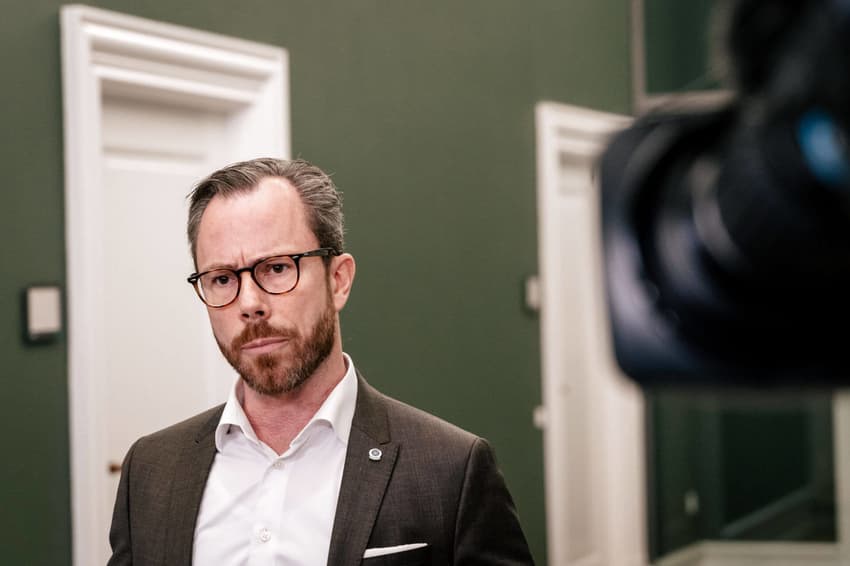What does Denmark’s Liberal party want from government negotiations?

After a poor showing in the last parliamentary election, the Liberal party (Venstre) has warmed to the idea of joining a central coalition government helmed by Social Democratic leader Mette Frederiksen.
The Liberal (Venstre) party, the largest in the ‘blue bloc’ conservative group, ruled out governing with Frederiksen prior to the election, but has since moved to a more open stance.
Suggestions the Liberals may be prepared to enter government with the Social Democrats gained momentum following a Liberal party national conference last weekend.
After the Red-Green Alliance (Enhedlisten), one of the parties that gave Frederiksen's red bloc a slim parliamentary majority, exited negotiations on Wednesday, pressure appears to be building on the Liberals on to find an agreement.
READ ALSO: ‘Mette Frederiksen has changed’: Danish left-wing parties exit government talks
However, Liberal leader Jakob Ellemann-Jensen said late on Wednesday that he “didn’t know” whether the Liberals and Social Democrats would govern together.
“We are tackling this task constructively. Regardless of how it ends, our wish is to have a government that takes the most responsible direction possible for Danish economy and Danish reforms,” he said.
“The more Liberal policies that characterise the poilitics that are practiced, the more responsible it will be. That’s in our interest,” he said.
Priorities for the Liberal Party include reforming labour supply and taxes, including an adjustment of the limit for the top tax bracket (topskat).
The Liberals want to raise the limit so fewer Danes pay the highest tax rate, which currently applies on money earned after the first 600,543 kroner a year.
READ MORE: ‘Topskat’: What is Denmark’s high income tax bracket?
"This is what we want to test. Is there the will to reform that is needed if we are to future-proof our society?" Ellemann-Jensen said in comments to news wire Ritzau.
The Liberals suffered a bruising election, losing 20 seats and 10.1 percent of the vote share to leave the party with 20 seats in parliament. It remains the second-largest party after the Social Democrats, however.
Comments
See Also
The Liberal (Venstre) party, the largest in the ‘blue bloc’ conservative group, ruled out governing with Frederiksen prior to the election, but has since moved to a more open stance.
Suggestions the Liberals may be prepared to enter government with the Social Democrats gained momentum following a Liberal party national conference last weekend.
After the Red-Green Alliance (Enhedlisten), one of the parties that gave Frederiksen's red bloc a slim parliamentary majority, exited negotiations on Wednesday, pressure appears to be building on the Liberals on to find an agreement.
READ ALSO: ‘Mette Frederiksen has changed’: Danish left-wing parties exit government talks
However, Liberal leader Jakob Ellemann-Jensen said late on Wednesday that he “didn’t know” whether the Liberals and Social Democrats would govern together.
“We are tackling this task constructively. Regardless of how it ends, our wish is to have a government that takes the most responsible direction possible for Danish economy and Danish reforms,” he said.
“The more Liberal policies that characterise the poilitics that are practiced, the more responsible it will be. That’s in our interest,” he said.
Priorities for the Liberal Party include reforming labour supply and taxes, including an adjustment of the limit for the top tax bracket (topskat).
The Liberals want to raise the limit so fewer Danes pay the highest tax rate, which currently applies on money earned after the first 600,543 kroner a year.
READ MORE: ‘Topskat’: What is Denmark’s high income tax bracket?
"This is what we want to test. Is there the will to reform that is needed if we are to future-proof our society?" Ellemann-Jensen said in comments to news wire Ritzau.
The Liberals suffered a bruising election, losing 20 seats and 10.1 percent of the vote share to leave the party with 20 seats in parliament. It remains the second-largest party after the Social Democrats, however.
Join the conversation in our comments section below. Share your own views and experience and if you have a question or suggestion for our journalists then email us at [email protected].
Please keep comments civil, constructive and on topic – and make sure to read our terms of use before getting involved.
Please log in here to leave a comment.